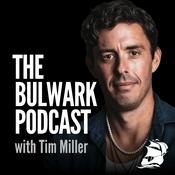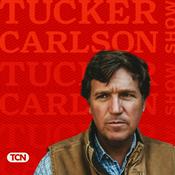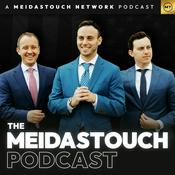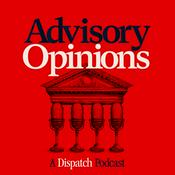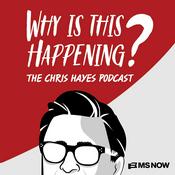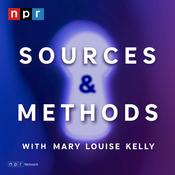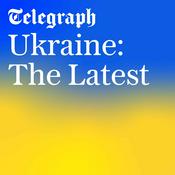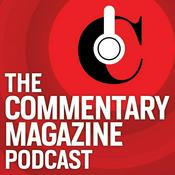Available Episodes
5 of 401
- Chasing Hail | Re-releasedRECORDED MARCH 4, 2025; Originally released March 12, 2024Guest: Dr. Sean Waugh, National Severe Storms Laboratory research scientistAs we’ve seen in the movies, and real life, tornadoes are some of the most destructive forces in nature, capable of leveling homes and damaging entire communities in a matter of minutes. And what about hail? It causes BILLIONS and billions of dollars in damage in the US every year. But how do we get up-close, real-time data on these violent storms in order to learn what is needed for better predictions? That’s where cutting-edge field research comes in. Today on Weather Geeks, we’re diving into the world of storm observation and mobile weather technology with Sean Waugh from NOAA’s National Severe Storms Laboratory. From deploying instrumented drones and mobile mesonets to braving the extreme environments of tornadoes and hailstorms, his work is helping scientists better understand the atmospheric conditions that drive severe weather for years to come…Chapters00:00 The Destructive Power of Tornadoes and Hail02:58 Sean Wu: A Journey into Meteorology05:57 Innovative HAIL Camera Technology08:47 Chasing Hail: The Challenges and Safety Measures11:59 Observing Hail: The Role of High-Speed Cameras14:46 Mobile Mesonets: Gathering Atmospheric Data17:59 Machine Learning and AI in Weather Prediction21:02 AI in Meteorology: Enhancing Forecasting Accuracy24:23 Hands-On Learning: Training the Next Generation of Meteorologists26:00 Tornado Research: Understanding Formation and Behavior28:05 Behind the Scenes of Twisters: A Meteorologist's Role32:20 Authenticity in Film: The Science of Twisters36:41 Passion in Meteorology: Inspiring Future GenerationsSee Privacy Policy at https://art19.com/privacy and California Privacy Notice at https://art19.com/privacy#do-not-sell-my-info.--------41:36
- A Deep Dive into Google DeepMind | Re-releasedRECORDED JANUARY 22, 2025; Originally released FEBRUARY 12, 2025Guests: Dr. Ilan Price, Senior Research Scientist, & Matt Willson, Research EngineerFrom the Euro to the GFS to the Canadian, there are multitudes of models that forecasters use to predict our daily weather. There are models for short-term severe forecasting, 10-day outlooks from your local news, and even models that predict our climate years into the future. As technology advances, so do all of these models and the technology we are focusing on today on Weather Geeks is AI. While it may seem like a buzzword these days, it can be used to enhance our industry and help us all reach our common goal: saving lives and property. We are thrilled to welcome Dr. Ilan Price to discuss GenCast, Google’s weather forecasting model that is entirely powered by AI. How does it stack up to the models we know and love? The answer may surprise you…Chapters00:00 Introduction to AI in Weather Forecasting02:10 Meet the Experts: Ilan Price and Matthew Wilson06:34 Understanding GenCast: The AI Weather Model10:47 Machine Learning vs Traditional Forecasting13:22 Data Sources and Ethical Considerations15:10 Handling Extreme Weather Events21:15 Validation and Verification of GenCast23:26 Impact of GenCast on Weather ForecastingSee Privacy Policy at https://art19.com/privacy and California Privacy Notice at https://art19.com/privacy#do-not-sell-my-info.--------23:50
- 2025 Weather Wrap-UpIt’s been one wild ride through the atmosphere this year — from record-breaking heat waves to snowstorms that made us double-check the map, a hurricane that rewrote history, and tornadoes that left meteorologists speechless. Today, we’re taking a step back (and maybe a deep breath) to relive the biggest, boldest, and most unbelievable weather moments of the year. We’ll break down what happened, why it happened, and what it all means for the climate conversations ahead. Pour yourself a cup of coffee, sit back, and join us as we revisit the skies that shaped our 2025 one storm at a time.Chapters00:00 Weather Highlights of 202510:13 Devastating Fires in Los Angeles16:53 Break 116:58 Severe Weather and Tornadoes24:54 Flooding Across the Country25:49 Understanding Extreme Weather Events28:49 The Importance of Flash Flood Warnings31:35 The Impact of Urbanization on Flooding33:53 Break 233:54 Analyzing the Quiet Hurricane Season40:01 Hurricane Melissa: A Case Study45:13 The Role of AI in Weather Forecasting47:57 The Importance of Meteorological WorkforceSee Privacy Policy at https://art19.com/privacy and California Privacy Notice at https://art19.com/privacy#do-not-sell-my-info.--------51:20
- The Weather Guys at WisconsinGuests: Dr. Steven Ackerman and Dr. Jonathan MartinFor most of us, weather talk is a quick chat about the weekend forecast or a snowy commute. But in Wisconsin, “The Weather Guys” have turned those conversations into something much bigger — a beloved radio show that brings science, stories, and a touch of humor to the airwaves. For years, they’ve been breaking down everything from blizzards to climate change, making meteorology both accessible and fun. Today, we’ll sit down with Dr. Steven Ackerman and Dr. Jonathan Martin to hear how their show began, what keeps listeners tuning in, and why Wisconsin weather makes for some of the best conversations around.Chapters00:00 The Birth of Weather Talk00:45 How They Became Weather Geeks03:02 Research Insights and Contributions08:08 Engaging the Public Beyond Academia11:44 Break 111:45 The Importance of Public Engagement14:12 The Dynamics of Show Planning15:29 Memorable Questions from Callers17:00 Balancing Complexity in Communication18:38 Break 218:40 Wisconsin Weather: A Unique Landscape21:30 The Changing Landscape of Weather Communication24:35 Advice for Young Meteorologists27:21 The Future of Weather and AISee Privacy Policy at https://art19.com/privacy and California Privacy Notice at https://art19.com/privacy#do-not-sell-my-info.--------31:05
- Ken Burns vs. Mother Nature: Behind the Scenes of The American RevolutionGuest: Ken BurnsHe’s an Award-Winning Filmmaker known for his documentary films and television series, many of which chronicle American history and culture. Some of his most popular works include the Civil War, Baseball, Jazz, the National Parks, Prohibition, the Roosevelts, the Vietnam War, and Country Music. Behind the majestic shots and carefully chosen words, there’s another character always in the frame: the weather. From outracing clouds to chasing snow that just won’t fall, even filmmaker Ken Burns has learned that Mother Nature doesn’t always take direction. While shooting his newest series The American Revolution, weather wasn’t just a backdrop — it was a full-fledged co-star. Today, we’ll talk with Ken about the challenges and surprises of filming history in real weather, how climate and geography shaped the American Revolution, and why sometimes the best storyteller is the sky.Chapters00:00 Introduction to Ken Burns and His Work01:10 The Role of Weather in Filmmaking02:22 The American Revolution: A Complex Narrative04:19 Challenges of Capturing Weather in Filmmaking07:14 The Importance of Authenticity in Storytelling09:36 Weather's Impact on Historical Events12:13 Technological Advancements and Their Influence14:27 The Unpredictability of History17:31 The Drama of Real Weather in StorytellingSee Privacy Policy at https://art19.com/privacy and California Privacy Notice at https://art19.com/privacy#do-not-sell-my-info.--------21:12
More News podcasts
Trending News podcasts
About Weather Geeks
You see it every day. It’s the subject of poetry, literature, art and film. It can inspire spiritual experiences, and it can destroy everything you have ever worked for. It is the weather, and no one knows it better than we do. Join us every week for the agony and the ecstasy of the one story that the entire world participates in and the science behind it. From the people behind The Weather Channel TV network.
Podcast websiteListen to Weather Geeks, The Daily and many other podcasts from around the world with the radio.net app
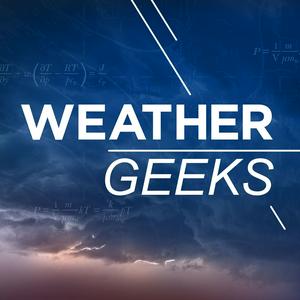
Get the free radio.net app
- Stations and podcasts to bookmark
- Stream via Wi-Fi or Bluetooth
- Supports Carplay & Android Auto
- Many other app features
Get the free radio.net app
- Stations and podcasts to bookmark
- Stream via Wi-Fi or Bluetooth
- Supports Carplay & Android Auto
- Many other app features


Weather Geeks
Scan code,
download the app,
start listening.
download the app,
start listening.


